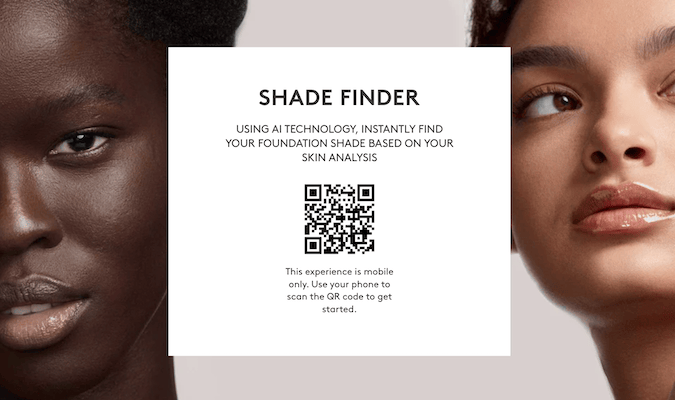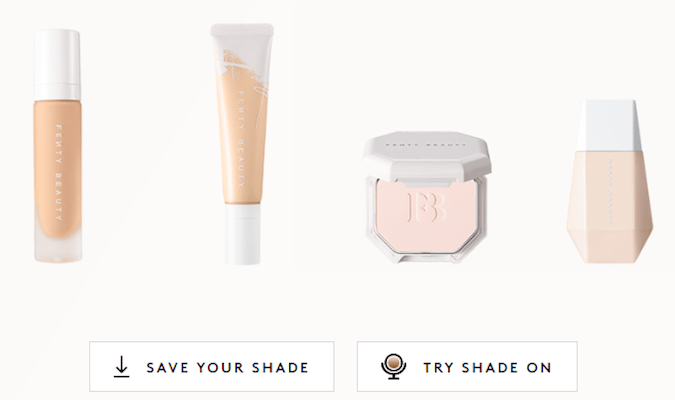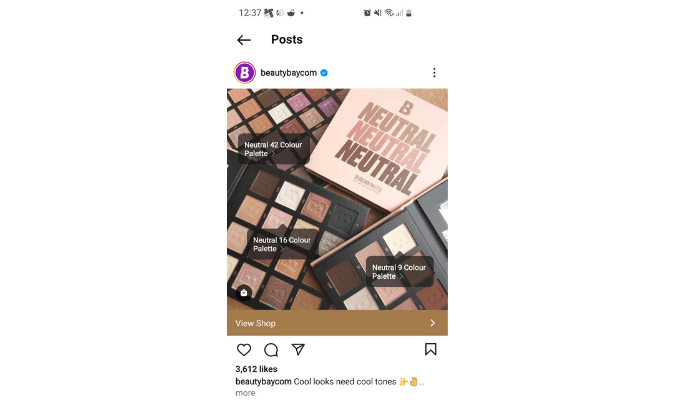7 Easy Steps to Boost Ecommerce Sales

[ad_1]
You’re here because you want to grow your ecommerce business. Maybe your sales have started to plateau. Or maybe you’re just curious about new strategies you can use to boost sales. Over 2 million companies in the US sell physical goods online. Competition is fierce and new developments in the ecommerce space mean every ecommerce company needs to step up its game. Below you’ll find a series of actions to take inspired by top-performing brands so you can dominate the new ecommerce landscape.
Step 1 – Develop a Relatable Brand
One of the crucial aspects of modern digital selling is that you must understand and appeal to your audience, not every single consumer.
How are you going to compete for shoppers with giants like Amazon and eBay? At the end of the day, your advantage is the personal touch you can provide that they can’t.
To nurture this personal touch, you must develop and express your brand values. These should be unique to your company. What do you stand for? What does your business care about?
Patagonia is a great example here. They have an entire page on their site dedicated to environmental activism, headlined by one of their core values: “We’re in business to save our home planet.”

Patagonia understands how sustainability and eco-consciousness resonate with its customer base. It keeps its customers returning to Patagonia because its values align with the company’s, and it attracts new shoppers for whom this ethos also resonates.
Conscious consumerism is on the rise and presents every ecommerce brand with a way to retain and attract customers based on company values.
The shorts and activewear company Chubbies is another good example. On their brand values page, they list a series of core beliefs that relate to their products (“We believe in comfort”) and their socially conscious values (“We believe Black Lives Matter”).

It’s not all serious, as they also manage to express their personality and sense of humor in some of the other listed values (“We believe sweat shorts are the greatest innovation in lounging since hammock cup holders…”). All in all, it presents a blend of ethical beliefs and guiding product principles to create a series of statements that are relatable and accessible.
This all comes down to truly knowing your audience. Learn your target audience’s demographics (age, income, location, etc.) and psychographics (interests, ideals, hobbies, etc.), then cater to them in your website copy, marketing materials, emails, and social media posts.
And it doesn’t all have to be heavy, ideals-related stuff. In this social media post, Raleigh turns a bike ride into a Sonic-style gaming experience to communicate the fun and imaginative side of their brand.

It’s a clever way to draw on the interests of the audience, between adults who played that video game as kids and their children who adore gaming today.
These examples each required the brands to have a deep understanding of their customers. If you don’t have the same firm grasp on your target shoppers, the first step to take is to gain it through research and feedback.
You could run surveys with existing or past customers to gather information on their values and interests. Or utilize a social listening tool to analyze public, online conversations your audience is engaging in around your industry. You’ll also learn a lot about how your audience speaks online in terms of the language and tone they use and respond to.
Do all you can to learn everything about your customers’ likes, dislikes, motivations, values, passions, and the like. When you get this information, you’ll be able to apply it to your brand identity to make it more relatable and attractive to your ideal audience.
Step 2 – Create Personalized Experiences
Armed with that knowledge, you can also begin to create shopping experiences that are more tailored to the interests and preferences of your customers.
80% of consumers are more likely to buy from brands that offer a personalized experience. This isn’t a bonus for consumers nowadays—it’s an expectation. And, if they don’t get it from you, they’ll buy from another brand.
Ecommerce brands must find a way to make the online shopper’s journey as personal as going into a brick-and-mortar store and interacting with a sales assistant.
Today, there’s a lot more you can do to personalize the experience than, say, including a customer’s name in an email campaign.
With the information you gathered on your customers (current and potential) in the previous step, you can alter your online shopping experience to match the values, preferences, and needs of shoppers. That can affect everything from your homepage layout to how you let shoppers interact with what you sell without ever physically touching products.
Fenty Beauty does an excellent job in this. They offer a makeup shade finder for their customers on their website. Every shopper landing on their product page can click Find My Shade and get the level of personalized assistance they would want from the makeup counter at a department store.

The product and the experience cater to people of all skin tones and helps them select exactly the right product for them.
Fenty even goes a step further by offering a virtual try-on service using augmented reality (AR) to further ensure shoppers get the right shade or look they’re going for.

Through this personalized experience, Fenty prevents a huge sales roadblock in their product category: the need for customers to see something and try it before buying.
AR virtual try-ons work for companies in a number of categories, including clothing and accessories. You could even create an AR experience to show a customer how a piece of furniture would look in their own house, for instance.
Another way to increase personalization is to utilize tools like quizzes and chatbots to learn what a shopper wants and guide them through the shopping journey based on their inputs.
For example, Superzero uses a quiz to discover relevant use cases for its products and customer pain points for each shopper. Below, you’ll see an example of one of the quiz questions, which asks what the shopper wants most from a body balm and presents five options.

Each answer given in a quiz or to a chatbot can inform the journey you want to guide the shopper on, eventually leading to presenting only the most relevant of your products to them. When you can streamline and focus their experience like this, you’ll soon notice how much more likely they are to complete the purchase afterward.
Step 3 – Make Use of Automated Email Marketing
Automated emails allow you to personalize interactions with your audience at scale. The idea here is to send the right message to the right person at the right time to boost sales.
This is a no-brainer. Automated emails produce 320% more revenue than regular emails. And there are a wide variety of email types that you can automate.
One example is an abandoned cart email. When a user places an item in their cart but doesn’t check out, this automatically triggers your marketing automation software to send a follow-up email that reminds them of the product they left behind, offers a limited-time deal for returning to complete the purchase, or some other sort of nudge to bring them back to your web store.
A good example is from the luggage company Away, which leads with the headline “Forgot something?” and entices the recipient to return by highlighting risk-mitigating policies like their 100-day trial period and free shipping and returns.

These are factors likely to persuade the customer to return to buy the item. Expensive shipping can be a major roadblock in the path to purchase, and a stress-free path to returning the item alleviates any concerns about getting stuck with it if the buyer doesn’t like it.
You can also use automated email sequences to boost overall revenue and average purchase price. For instance, you can set up a timer that will send an email presenting items related to what a customer purchased recently. Or, make a more complex post-purchase email sequence that warms a customer up for another purchase.
For example, the first few emails in the sequence might be a purchase confirmation email, a shipping update, and then a request for feedback or leaving a review of the product. Then, after a timespan you determine, the final email in the sequence recommends related items based on what the customer purchased, like accessories or other products of a similar style.
It may look something like this email from Crate&Barrel that thanks the customer for their previous purchase and then subtly suggests four related items.

Many email builders have dynamic widgets you can add to your emails that will automatically populate with related products based on the recipient’s previous purchases or browsing history. Even though the email is automated, the customer still receives personalized recommendations.
Step 4 – Try Social Selling
Social media is still a viable platform for boosting ecommerce sales if you’re able to target customers where they’re already spending a lot of their online time.
Fortunately, you can make social posts on Facebook, Pinterest, or Instagram shoppable, embedding direct links to product pages on the sections of your image that show those products. Here’s an example from Beauty Bay’s Instagram, showing three of their color palette options with links:

Instagram users can either click on those specific product tags or click the View Shop button to be taken to Beauty Bay’s online store pages. It’s the perfect opportunity for you to convert casual browsers while they’re just scrolling through their feeds.
Just remember to keep your social media accounts authentic to your brand and relatable to your audience. Don’t be overly sales-focused in your posts. Your content must fit in naturally with your brand identity and with what users on the platform like to see. Too many sales pitches or bells and whistles, and the audience will see right through you and hit unfollow.
Step 5 – Make Video Marketing Part of Your Strategy
Consumers love video content, and it’s a great approach for online businesses to take. 84% of consumers say a video has persuaded them to buy a product or service in the past.
There are many types of videos that are effective for ecommerce brands. Show a product in action, create a lifestyle-focused video that ties your products to some sort of customer aspiration, or explain your complex product to demonstrate how it works, as in the example below from Dell:

In the above screenshot, Dell shows how its security features are built into its OptiPlex desktop computers.
Similarly, you can draw in potential buyers by demonstrating the features, benefits, or results associated with your product.
If you want to take a different approach, try videos that feature behind-the-scenes and casual content. This type of video shows the human side of your brand, like the below screengrab from a Peloton video where you get to know some of their row instructors.

Videos like this one increase brand reach, add relatability, and make the audience want to become a part of the Peloton community. In other words, it’s a smart and subtle sell.
Short, eye-catching social media videos and GIFs are also a must for ecommerce companies, especially on crowded platforms like Twitter or Reddit. Take Beyond Meat, which has a simple four-second GIF they post on Twitter showing their plant-based meat in a dish in a close-up.

The mouthwatering imagery does more than a written tweet can ever do. Plus, Beyond uses this video to generate buzz about a new product drop, which is another good video marketing tactic. You can create a quick promotional video for a special offer or limited-time sale to drum up interest.
Step 6 – Utilize Social Proof
Social proof plays on a couple of concepts. It relies on a positive association with what other people are doing. There’s the fear of missing out and the need to fit in.
In other words, when a lot of people are buzzing about a product, the consumer thinks they’ve got to have it too.
Trusting peers and experts more than a brand’s own messaging is also a part of social proof. The consumer creates a positive association with a product if a trustworthy person vouches for it. The rationale is that the person vouching for it doesn’t have as much to gain by promoting it as the brand itself.
One way to demonstrate social proof for your products is by embracing customer reviews and placing them prominently on your site and product pages. Review sections on product pages may be just the nudge a potential customer needs to add the product to their cart.
Returning to the luggage brand Away, they put their best reviews front-and-center on their homepage.

The language they use bolsters social proof. When they say, “What fellow travelers are saying,” they’re implying, “here’s what people just like you are saying.”
Another example of social proof is an endorsement from an expert, celebrity, or influencer. Adidas, for example, works with well-known soccer players to promote their gear, as in this example featuring South Korea and Tottenham Hotspur star Son Heung-min.

You don’t necessarily need to find a celebrity to endorse your wares, though—just somebody respected in your niche. For instance, a medical professional vouching for your back massager or a craft blogger reviewing your sewing kit can be more effective than a random celebrity because they’re more relatable to your audience.
Step 7- Improve Your Customer Retention
It’d be a mistake to think that boosting sales is all about acquiring more customers. Keeping loyal customers is just as important for your bottom line. Studies show you can make 10 times more from loyal customers than what their first purchase was worth.
The trick is to maximize customer lifetime value and encourage repeat purchases. One way to do this is by offering a subscription service. It provides predictable, recurring revenue for your online store.
The Body Shop, for example, offers a subscription service that saves the customer money compared to repeat purchasing but also ensures consistent revenue for the company.

This approach will work for any item in your store that customers may need to refill or restock regularly.
If this model doesn’t suit your catalog, then you could create a curated monthly subscription box. Or, set up a membership program where customers subscribe to get access to certain perks like members-only deals or free shipping.
A common, related tactic is customer loyalty programs.
Cotton On uses a points-based rewards program, for example, that gives customers greater discounts the more that they buy.

Naturally, the prospect of receiving rewards for their purchases means customers are more likely to continue purchasing from you over another brand from which they get no such benefits.
Like Cotton On, you should opt for a points-based program rather than a tiered program. It’s much more appealing to customers, as they have autonomy over the rewards they choose, making the program more personalized and boosting customer loyalty even further.
[ad_2]
Source link
